
Disclaimer: Copyright infringement not intended.
Context
- The United Nations has estimated that by the year 2050, four billion people will be seriously affected by water shortages. This might lead to multiple conflicts between countries over water sharing.
Water: Undervalued and mismanaged
- Water is the most crucial natural resource for every form of life, yet it remains undervalued and inadequately managed worldwide.
- At the global level, 31 countries are already facing a shortage of water and by 2025, there will be 48 countries facing serious water shortages.
- Recognizing, measuring and expressing water’s worth and incorporating that into decision-making is still a challenge, apart from the water scarcity.
- Failure to value water in all its forms is considered a prime cause of the mismanagement of water, according to the UN World Water Development Report 2021, published by UNESCO on behalf of the UN-Water.
Need of the hour
- An integrated approach towards all sources of water is the need of the hour.
- Shifting the attention from a single-minded and linear water management to a multi-dimensional integrated water management approach, that is, the ‘One Water’ approach, for a comprehensive, resilient and sustainable management of water resources.
One Water Approach
- ‘One Water’ is the recognition that all water has value, regardless of its source. It includes managing that source in an integrated, inclusive and sustainable manner by including the community, business leaders, industries, farmers, conservationists, policymakers, academics and others for ecological and economic benefits.
- This new water management approach is also referred to as Integrated water resources management (IWRM).
Characteristics of One Water Approach
- A ‘One Water’ approach can be analysed and implemented in many different forms, but all share some common unifying characteristics:
- The mindset that all water has value — from the water resources in our ecosystems to our drinking water, wastewater and stormwater.
- A multi-faceted approach meaning that our water-related investments should provide economic, environmental, and societal returns.
- Utilising watershed-scale thinking and action that respects and responds to the natural ecosystem, geology, and hydrology of an area.
- Partnerships and inclusion in recognizing that real progress and achievements will only be made when all stakeholders come forward and together will take a decision.
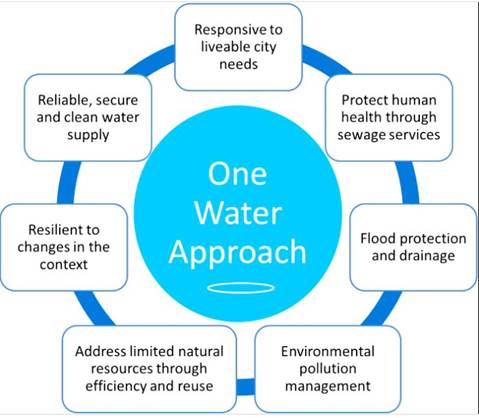
Dublin Principles
The IWRM principles adopted at the International Conference on Water and the Environment in Dublin, Ireland, in 1992, are known as the Dublin Principles:
- Fresh water is a finite and vulnerable resource, essential to sustain life, development and the environment
- Water development and management should be based on a participatory approach, involving users, planners and policy-makers at all levels
- Women play a central part in the provision, management and safeguarding of water
- Water has an economic value in all its competing uses and should be recognized as an economic good
Integrated water resources management is based on the equitable and efficient management and sustainable use of water and recognises that water is an integral part of the ecosystem, a natural resource, and a social and economic good, whose quantity and quality determine the nature of its utilisation.
Objectives of One Water Approach
The approach provides the potential to enhance the urban, social and environmental landscape. It is a multi-faceted collaborative technique that strives for greater coordination among various stakeholders and decision-makers with the following objectives:
- Reliable, secure, clean water supplies
- Aquifer recharge
- Flood protection
- Minimizing environmental pollution
- Efficient use and reuse of natural resources
- Resiliency to climate
- Long-term sustainability
- Equity, affordability and accessibility to safe drinking water
- Economic growth and prosperity
In a nutshell, One Water recognizes that a community’s groundwater, surface water, effluent, and urban stormwater can all help meet economic, environmental, and human needs and lead to a more resilient and sustainable community.
The figure below describes the evolution into a One Water Community:
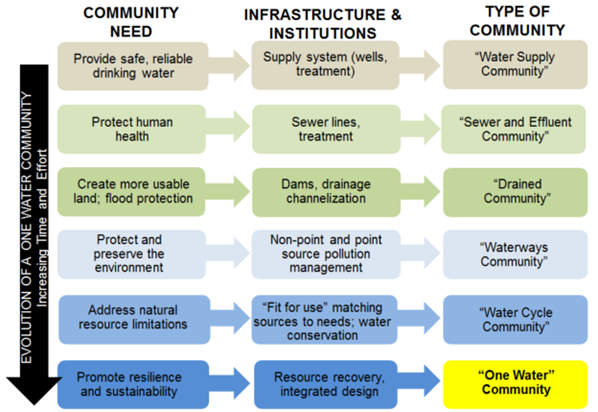
Advantages of Integrated water resources management (IWRM) over conventional water management approach
IWRM is superior to the conventional water management approach in several ways.
- In the conventional water management approach, drinking water, wastewater and storm water are managed separately, whereas in ‘One Water’, All the water systems, regardless of its source, are connected intentionally and managed meticulously for water, energy and resource.
- Water is recycled and reused several times in IWRM, in contrast to a one-way route from supply to use, treatment and disposal.
- Storm-water is utilized as a valuable resource to fight against water scarcity, recharge groundwater and support natural vegetation.
- The water system includes green infrastructures and a mix of grey and green infrastructure that form a hybrid system as compared to grey infrastructure in conventional water management.
- The interconnectedness of surface water, groundwater, stormwater and wastewater is collectively recognized and managed by these separate but connected entities.
- Active collaborations with industry, agencies, policymakers, business leaders and various stakeholders is a regular practice in the ‘One Water’ approach, whereas collaboration is need-based in conventional water management systems.
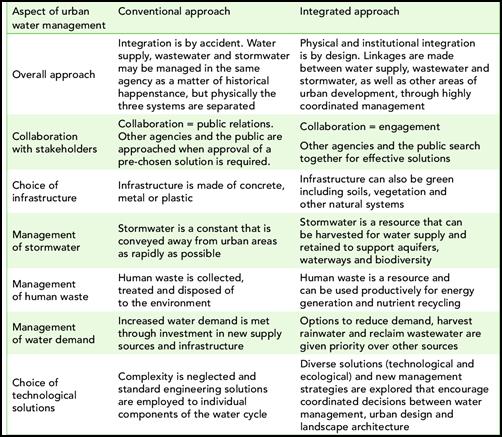
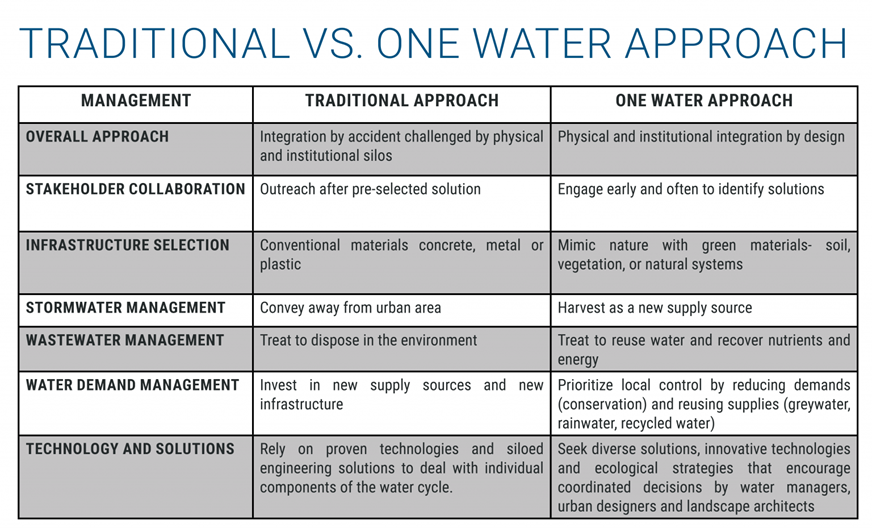

Barriers and their underlying causes to a One Water approach
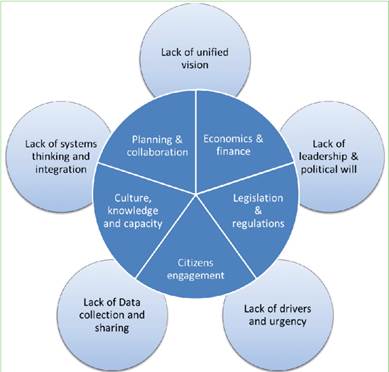
Case study: Los Angeles
- One Water Los Angeles has integrated the city of LA’s family of regional agencies, academia, businesses, environmentalists and other stakeholders. It formulated a LA 2040 Plan through a “Three legged stool approach” that ensures water quality improvement, water supply augmentation and flood risk mitigation.
- It is giving a major urban smart water cycle goal by creating “short-cuts” that enhances recycling and reuse while ensuring multiple benefits.
- The ‘One Water’ concept is about bringing all the diverse stakeholders together to advance common-ground solutions to combat the water and urban ecology challenges.
- Every individual, every community, every sector and every stakeholder group has a role to play in an improved decision-making network, from implementing policies to formulating plans for future developments.
- So together, we can secure a sustainable water future for all by contributing our ideas and innovation.
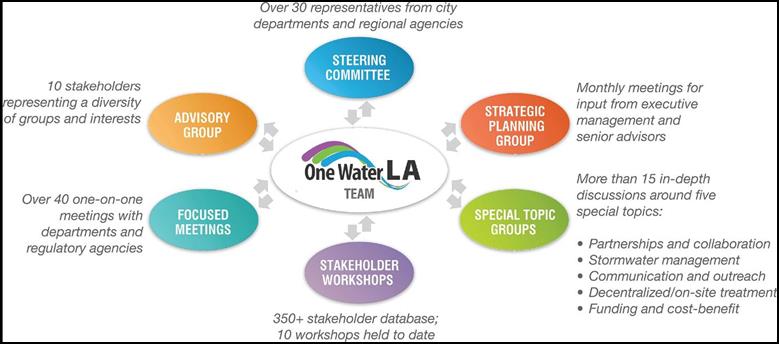
Way Ahead
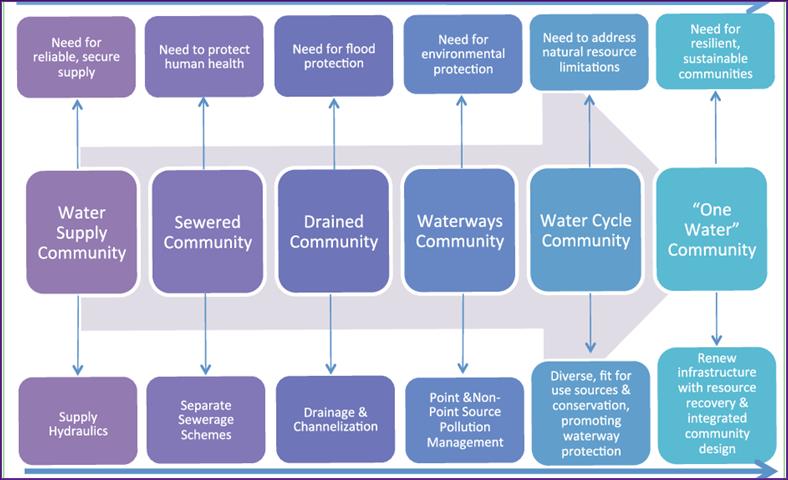
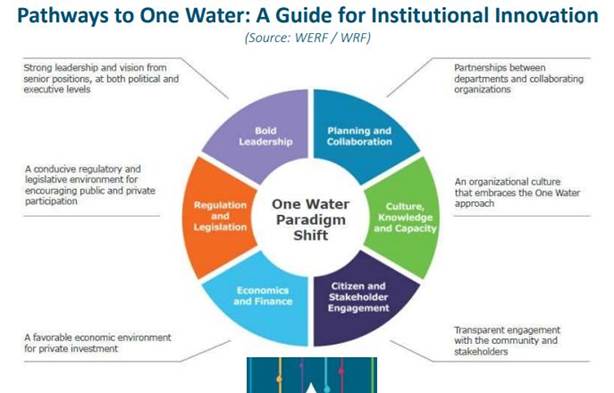
- “One Water” should be viewed as a process rather a one-shot approach -one that is long-term and forward-moving but iterative rather than linear in nature.
- There is not one correct administrative model. The art of IWRM lies in selecting, adjusting, and applying the right mix of tools for a given situation. Agreeing on milestones and timeframes is critical for success.
For policy-making and planning, applying an integrated approach requires that:
- Water development and management takes into account the various uses of water and the range of people’s water needs;
- Stakeholders are given a voice in water planning and management, with particular attention to securing the involvement of women and the poor;
- Policies and priorities consider water resources implications, including the two-way relationship between macroeconomic policies and water development, management, and use;
- Water-related decisions made at local and basin levels are along the lines of, or at least do not conflict with, the achievement of broader national objectives; and
- Water planning and strategies are incorporated into broader social, economic, and environmental goals.
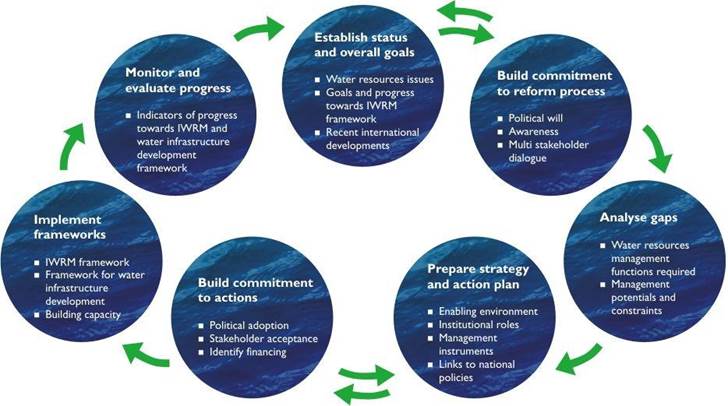
https://www.downtoearth.org.in/blog/water/a-one-water-approach-is-key-to-combat-urban-challenges-manage-resources-84908













